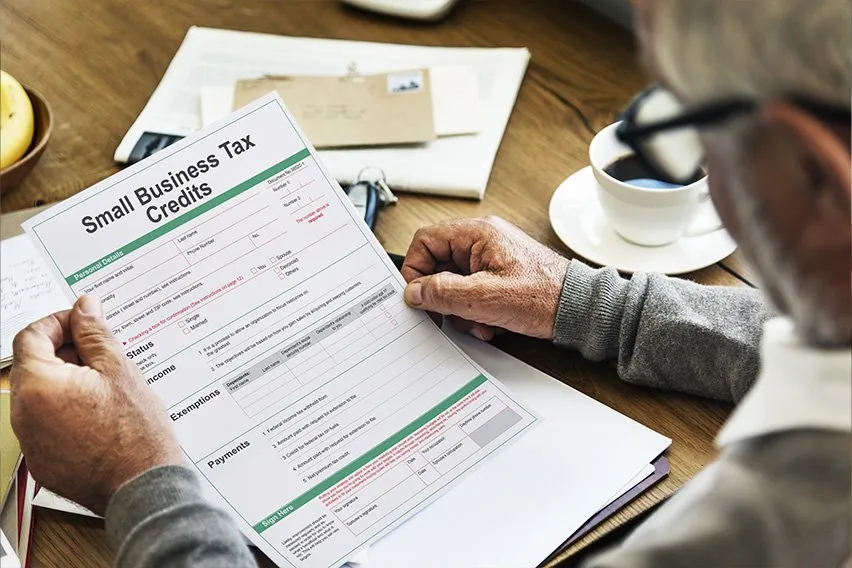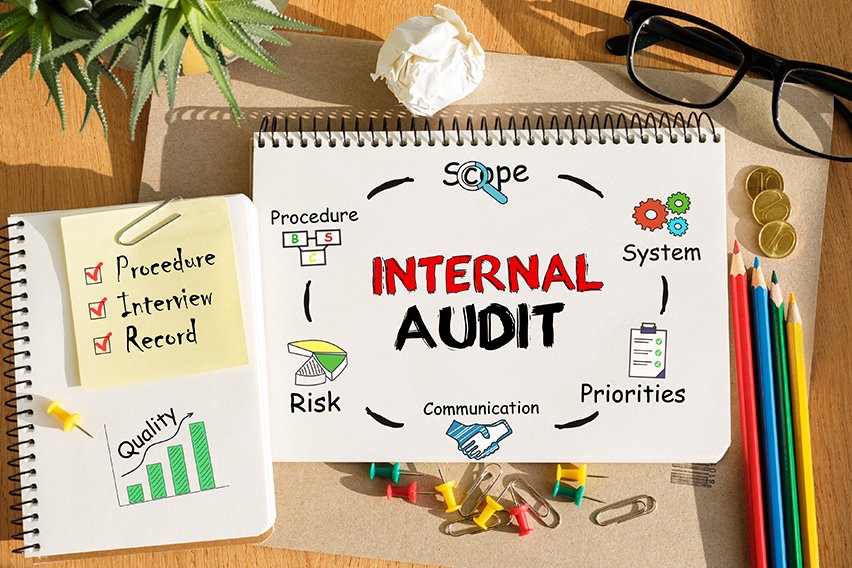How Much Does a Small Business Pay in Taxes?

Calculating taxes is far from the most exciting part of running a small business. However, this process is crucial for keeping your business compliant with federal laws. Also, understanding the basics of tax calculations can help you find avenues for potential tax savings. This gives your business the best chance to succeed.
Keep reading to learn how much a small business should pay in taxes and how to calculate income tax for your business.
Table of Contents
How Much Tax Does a Business Pay on Its Profits?
What Is the Tax Rate for Small Businesses in Australia?
What Is the Australian Business Tax Rate?
How Do You Calculate Small Business Taxes?
What Is the Tax-Free Threshold for a Small Business?
How Much Tax Do I Pay on My ABN?

How Much Tax Does a Business Pay on Its Profits?
The tax requirements for Australian companies are more comprehensive than other business structures. These business entities can expect to pay the following taxes:
- Profit tax
- Capital gains tax
- Rendered goods and services tax (GST)
- Employee benefits tax
- Payroll tax
Company owners lodge payroll tax returns when the value of the employees’ wages and salaries exceeds a specific threshold. This threshold varies from state to state. However, small businesses will rarely reach it, so the owner might not have to factor in the payroll tax rate when calculating taxes.
As far as the company tax on profit goes, it applies to the following entities:
- Companies
- Public trading trusts
- Corporate unit trusts
The full company tax rate in Australia is 30%. This rate applies to all businesses that aren’t eligible for the lower company tax rate.
What Is the Tax Rate for Small Businesses in Australia?
Small businesses in Australia can access numerous concessions regarding payment and reporting options. To qualify for these concessions, the Australian Taxation Office (ATO) must consider your business a small business entity.
The eligibility requirements change yearly, so keeping up with the ATO website is essential. Currently, your business must meet the following criteria:
- It’s a sole trader, partnership, company, or trust.
- It operates for all or part of the income year.
- It has a turnover of less than $10 million.
The $10-million threshold applies to most concessions, excluding the following:
- Small business income tax offset with a $5 million turnover threshold
- Capital gains tax (CGT) concessions with a $2 million turnover threshold
Eligible businesses are subject to a reduced company tax rate of 25%.
What Is the Australian Business Tax Rate?
All Australian companies are subject to a federal tax rate. There are 2 Australian business tax rates to keep in mind:
- 25% for base rate entities
- 30% for non-base rate entities
A company is a base rate entity if it meets the following criteria:
- Its aggregated turnover for the income year is less than the set aggregated turnover threshold. In 2022, the threshold was $50 million.
- It has less than 80% of passive income for the year.
The appropriate tax rates are applied to your declared profits, not your gross revenue.
How Do You Calculate Small Business Taxes?
Calculating taxes correctly is essential for a smooth business operation. When calculating small business taxes, there are 2 steps you should take.
Step 1: Determining the Taxable Income
The amount of taxes your business must pay depends on your taxable income. To calculate taxable income, you’ll need to figure out your assessable income and your deductions.
The assessable income is what your business earns. This includes gross income from everyday business activities and other sources, such as the capital gains tax. This income doesn’t include GST payable on sales you make or GST credits.
As for the deductions, they cover all expenses necessary to run a business, such as:
- Salaries, wages, and superannuation contributions
- Operating expenses
- Maintenance and repair costs
- Business travel expenses
Note that deductions will only be legitimate if the reported expenses are for your business.
If you’re slightly overwhelmed by all the numbers, you’re not alone. Calculating business expenses can be challenging, so many businesses turn to online tools for a solution. If you need help recording your expenses, you can rely on the FreshBooks accounting software. To start managing your business expenses successfully, follow these steps.
Once you gather the necessary information, the income calculation is simple. Subtract the business deductions from the assessable income.
Step 2: Calculate the Small Business Tax Offset
In most cases, after calculating the taxable income, you’d need to, well, tax it. This is done by multiplying the taxable income by the appropriate tax rate expressed as a decimal.
However, unincorporated small businesses are eligible for the small business income tax offset. This offset can reduce the tax amount by up to $1,000 per year.
The offset is calculated based on the proportion of tax payable relating to the total net business income. To work it out, do the following:
- Divide the total net income by taxable income.
- Multiply it with your basic income tax liability.
- Multiply the received number by the rate of offset for the financial year, expressed as a decimal.
As of 2022, the rate of offset is 16%. The offset amount appears separately on the notice of assessment. Even if the offset calculation is greater than the tax offset cap of $1,000, you can only deduct $1,000.
It’s completely understandable if all these numbers make your head spin. If that’s the case, head to ATO’s handy business tax offset calculator.
What Is the Tax-Free Threshold for a Small Business?
The tax-free threshold for a small business is $18,200. However, this threshold applies only to sole traders and individuals operating under an Australian Business Number (ABN). In other words, there isn’t a tax-free threshold for businesses that operate as registered companies.
How Much Tax Do I Pay on My ABN?
If you own a business, you’re probably familiar with ABN. If not, an ABN is a legal requirement for all businesses and self-employed individuals operating in Australia. You can apply for an ABN online in a few minutes.
The ATO uses this 11-digit number as a reference point for mailing invoices and other business documentation. More importantly, an ABN is critical for tax purposes, including GST and PAYGW.
When it comes to taxing the ABN, the money isn’t deducted directly from your business. Instead, it would be best if you kept a portion of each business transaction to cover the tax obligations at the end of the financial year.
The amount of tax you’ll pay on your ABN earnings depends on several factors. These include the following:
- Profit
- Capital gains
- Expenses
- Employee salaries
- The territory or state in which your business is registered
You can use the ATO tax calculator to determine the exact amount of taxes.

Key Takeaways
Small businesses in Australia can qualify for multiple small business tax concessions. These can significantly increase their chances of succeeding. Plus, the ATO provides numerous resources to help small business owners navigate the complex world of taxes. All that’s left for business owners is to stay on top of the latest eligibility requirements, calculate their taxes correctly, and pay tax on time.
FAQs on Small Business Taxes
Do you pay tax in the first year of business?
Businesses in Australia need to lodge a tax return every year, including the first year of business. This rule applies if your business profit exceeds the tax-free threshold of $18,200.
What happens if a business doesn’t pay taxes?
The ATO is well aware that taxpayers, especially small business operators, might have cash flow issues. These issues can prevent them from paying their tax bills on time. So, the agency encourages these businesses to reach out and receive assistance.
If they fail to do so, the ATO will charge interest on the unpaid amount and use your future credits to repay the amount you owe. In an extreme case, the agency might be forced to take legal action.
Do self-employed pay more taxes?
The ATO classifies sole traders and partners in a partnership as self-employed. They generally don’t pay more taxes. Plus, self-employed individuals might be eligible for numerous concessions. These can further decrease the amount of taxes they must pay.
RELATED ARTICLES

 How to Check PayPal Exchange Rate & Currency Calculator
How to Check PayPal Exchange Rate & Currency Calculator How to Confirm Bank Account on PayPal
How to Confirm Bank Account on PayPal What Is an Internal Audit?
What Is an Internal Audit? Nanny Tax Deduction: A Complete Guide
Nanny Tax Deduction: A Complete Guide